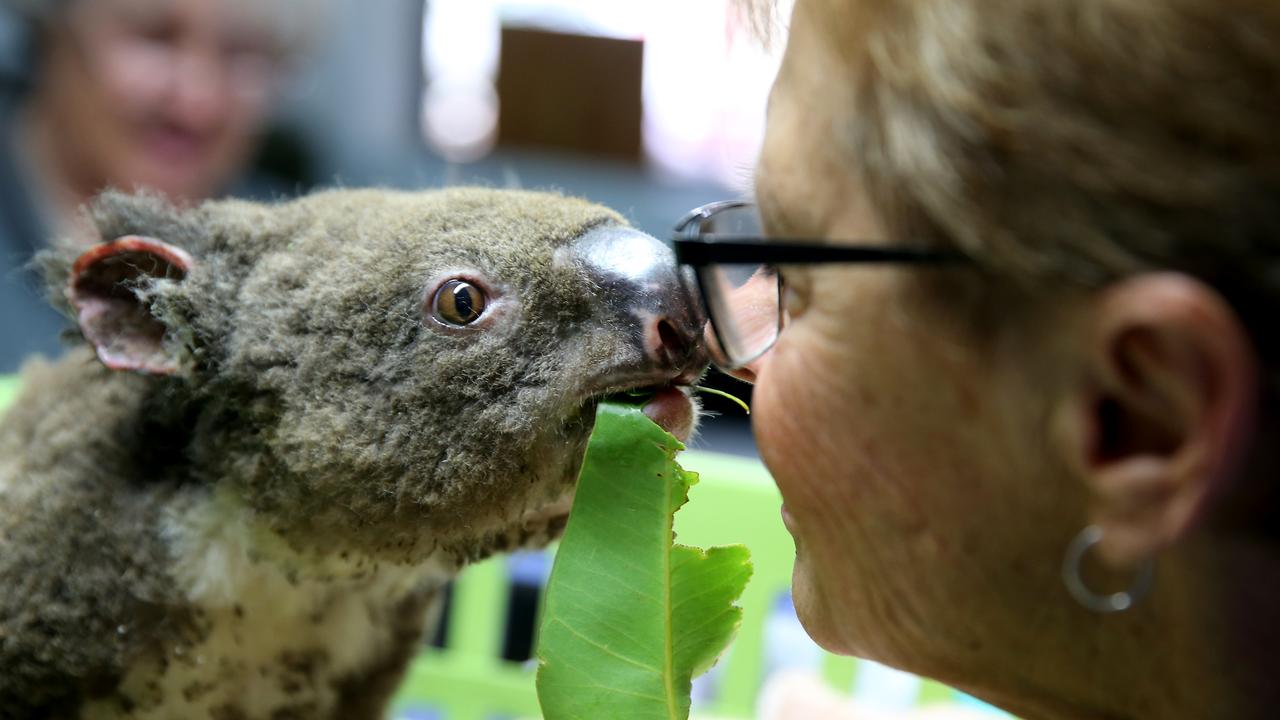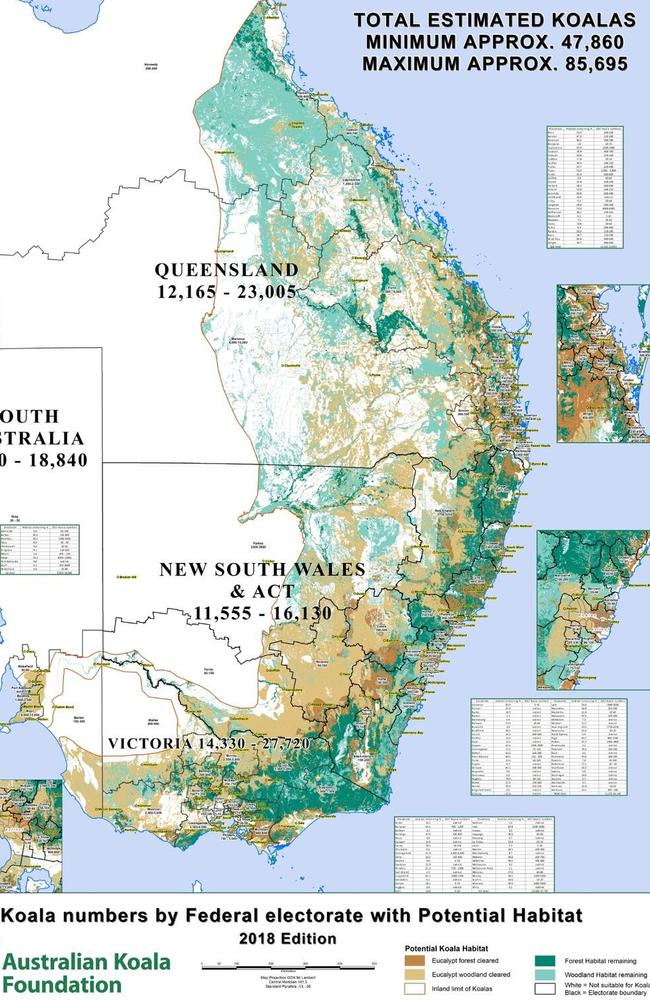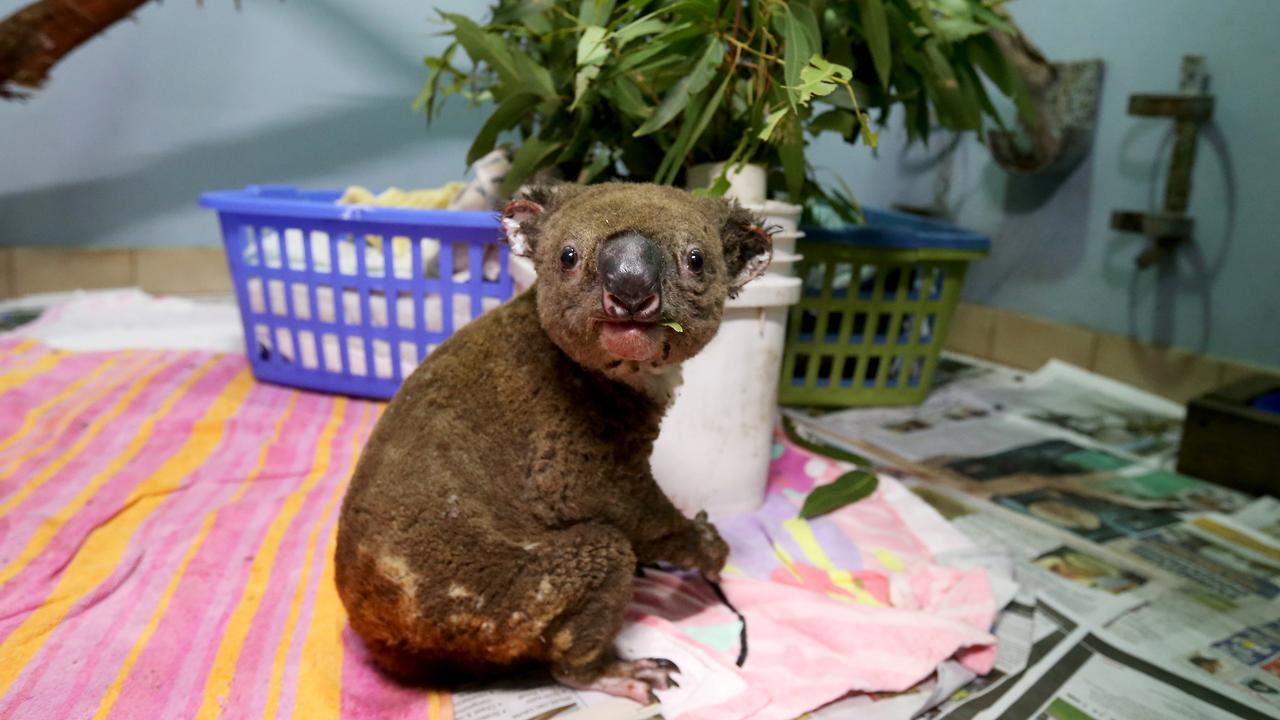Their numbers were already plummeting, now the bushfires have wiped out thousands more: The koala desperately needs our help
They’re an Australian symbol loved globally. But they were already in shocking decline – now the bushfires mean the future of the koala is bleak
OPINION
As temperatures soar throughout Australia, we know homes will be lost and untold hectares of land and wildlife decimated.
Nine lives have been lost and reports have said that half a million individual animals have been killed throughout the fire season.
But none has received as much attention as our fluffy little symbolic emblem, the humble koala. Its numbers were already in steep decline, from perhaps 500,000 just three years ago to a possible 100,000 today. That’s mainly due to habitat clearing, attacks by dogs, road accidents, disease and heat. Now bushfires have torn a swath through many of the remaining populations.
There is something about these relatively small, fluffy and cosy creatures that make most humans go weak at the knees.
Sure, koalas don’t actually do much, opting to sleep for around 18 hours a day and gobbling down eucalyptus leaves, but therein lies their charm.
With their chunky, stout, tailless bodies and large heads with round, fluffy ears and large, spoon-shaped nose, they could be something out of a Tim Burton film.
They are a ball of lazy and cuteness overload, just hanging around and living a life some humans so desperately desire.
Unfortunately, the “oohs” and “aahs” over their cuteness – and obligatory tourist selfies – haven’t been as frequent of late with so many of our precious koalas becoming victim to the catastrophic fires that have hit our eastern states.
Video after video, picture after picture have emerged of our dangerously dwindling koala population being helped out by strangers. Human strangers. Strangers who value life – whether human or not.

Everyone seems to have fallen in love again with what is – lanky kanga excepted – an international symbol that belongs to us and us alone. I don’t know about you, but their plight has constantly popped up in conversations I’ve had the last few weeks.
We feel incredibly protective of OUR koalas. Because they ARE ours. They represent something intrinsically and totally Australian.
The Australian Koala Foundation (AKF) estimates there are less than 100,000 koalas left in the wild, possibly as few as 43,000, all residing in the east of the country. Other estimates put the figure between 120,000 and 300,000, although no one can be sure because koala populations are so spread out.
The AKF has said if there really are lower than 50,000 koalas left, the species would be “functionally extinct”. That is debatable, as some populations are doing better than others. But there is no doubt the koala is in danger.

Federal Environment Minister Sussan Ley has said around 30 per cent of koalas of the up to 28,000 koalas on the New South Wales mid-north coast may have been killed in the country’s ongoing bushfire crisis.
In NSW, it’s estimated the koala population has shrunk by three quarters in the last 20 years.
The recent images of koalas in crisis are heart-wrenching. Take the extraordinary woman who put herself in harm’s way to save one from a burning tree and a South Australian cyclist named Lulu who was approached by a koala – and they hardly ever do that – climbing up onto her bike and literally begging for water.
That precious piece of fluff gobbled down that H20 faster than a coldie at the cricket.
Nationally, more than five million hectares have been burned. Some 3.4 million hectares have been destroyed in NSW alone.
Many koalas just have nowhere to go. Right now they’re losing their tree homes and their lives to excessive tree clearing.
We need to protect the homes of koalas before they’re gone forever. To adopt and fund their survival. It’s up to us to ensure future generations get to see these iconic Aussie animals in the wild.

FURRY KOALA FACTS FROM WWF
Koalas aren’t bears – they’re marsupials
You might hear the term “koala bear” being tossed around. While they might look bear-like with their round ears and big black nose, they’re actually marsupials.
Baby koalas are too cute
Called “joeys”, baby koalas develop in their mother’s pouch for about six months. After this time, they’ll ride on their mum’s back for another six months, only using the pouch to feed and sleep.
Koalas can be found in southeastern and eastern Australia
While koalas are a national symbol of Australia’s unique wildlife, they can only be found in the wild on the southeast and eastern sides of Australia, along the coastlines of Queensland, New South Wales, South Australia and Victoria. They live high up in eucalyptus trees of native bushlands and forests, usually perched between the forks of the tree’s branches.
They have a very supportive butt
Living in trees and being wedged between rough branches requires a lot of support. Luckily, the koala has strong cartilage at the end of their curved spine, allowing them to make eucalyptus trees a comfortable home.
They are fussy eaters
Koalas survive on a diet of eucalyptus leaves and can eat up to a kilogram a day. Pretty impressive, considering eucalyptus is poisonous to most animals. Their special fibre-digesting organ, called a caecum, helps to detoxify the chemicals in the leaves. However, they can be quite picky eaters, eating less than 50 of more than 700 eucalypt species.
Even then, they’ll often choose leaves at the top of the tallest trees that contain more liquid and nutrients – only the best for Australia’s koalas.

‘Koala’ is thought to mean ‘no drink’ in a local indigenous language
It was thought that koalas didn’t need to drink because of the moisture they get from munching on juicy eucalyptus leaves all day. However, they do drink from various water sources when needed, especially during heatwaves, times of drought and fire.
Koalas can sleep up to 18 hours a day
Despite the rumours, koalas don’t “get high” or “drugged out” on eucalyptus leaves. It’s because the leaves are so low in nutrients that koalas need more sleep than most animals. It basically helps them conserve energy.
Koala chlamydia is a serious disease
But it’s not the same strain of chlamydia that affects humans. Many koala populations are vulnerable to chlamydia, and it usually manifests when they’re in stressful situations. The disease can cause blindness and reproductive tract infections.
Koalas are losing their homes to excessive tree clearing
Many koala populations are faced with nowhere to go when their forest habitat is destroyed by deforestation. Tree clearing has tripled in NSW, leaving important koala habitats incredibly fragmented or completely lost.
With their trees gone, koalas are spending more time on the ground in search of food and shelter. Sadly, this is when they’re most vulnerable to being hit by vehicles, attacked by dogs or falling ill to stress-induced diseases like chlamydia.




